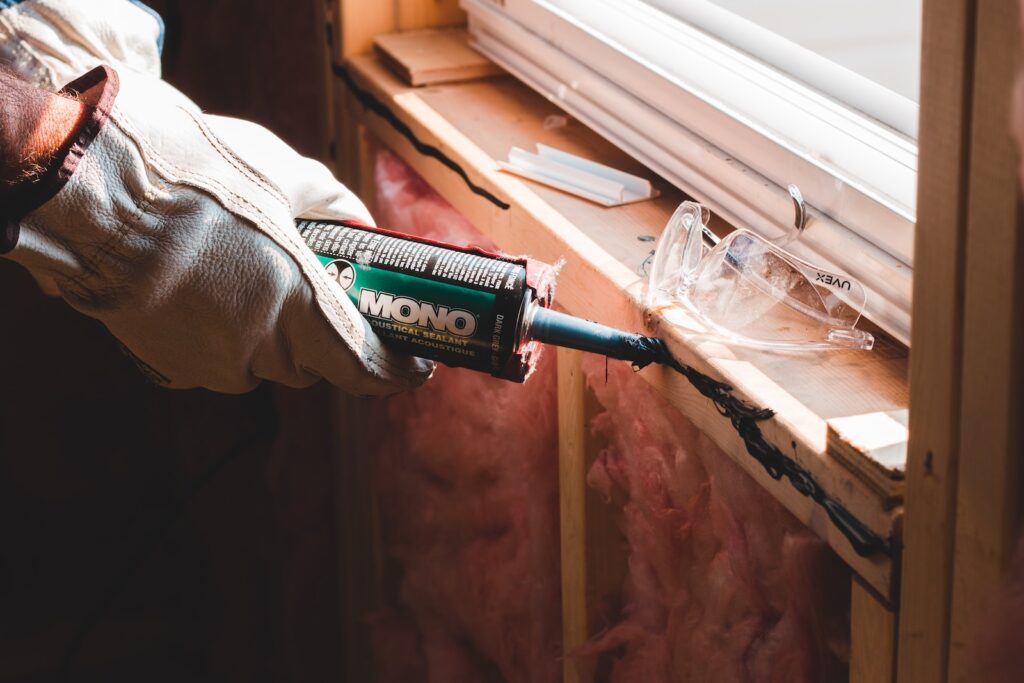So, you’re looking to weatherize your home, huh? Well, you’ve come to the right place! In this article, we’re going to break down the essentials of weatherizing your humble abode. Whether you’re trying to improve energy efficiency, keep out drafts, or simply make your living space more comfortable, we’ve got you covered. From sealing air leaks to insulating your attic, we’ll walk you through the best tips and tricks to ensure that your home is ready for any kind of weather. So, roll up your sleeves and get ready to weatherize like a pro!
Assessing your home
Before you begin weatherizing your home, it’s important to assess its current condition and identify areas that may need improvement. The following steps will help you evaluate the energy efficiency of your home and determine where you can make the most significant improvements.
Identify air leaks
Air leaks are one of the biggest culprits when it comes to wasted energy and higher utility bills. To identify air leaks in your home, start by conducting a careful inspection of all doors, windows, and exterior walls. Look for any visible cracks or gaps where air may be escaping or entering your home. Common areas where air leaks occur include around windows and doors, electrical outlets and switches, and along baseboards.
Check insulation levels
Proper insulation is essential for keeping your home comfortable and energy-efficient. Start by checking the insulation levels in your attic, walls, floors, and basement or crawl space. Insufficient insulation can lead to significant heat loss in the winter and heat gain in the summer. Use a ruler or tape measure to determine the thickness of your insulation, and compare it to the recommended levels for your region.
Inspect windows and doors
Windows and doors are notorious for allowing air leakage, especially if they are outdated or improperly sealed. Inspect your windows and doors for any signs of damage or wear, and check for gaps or cracks in the seals. This inspection should include both the windows and doors themselves as well as the surrounding frames and weatherstripping. Identifying any areas in need of repair or replacement will help improve the energy efficiency of your home.
Evaluate heating and cooling systems
Heating and cooling systems are major contributors to energy consumption in your home. It’s crucial to evaluate the efficiency of these systems to ensure they are operating optimally. Schedule a professional inspection and maintenance service for your HVAC system to identify any issues and improve its performance. Additionally, consider upgrading to a programmable thermostat, which allows you to set temperature schedules and reduce energy usage when you’re away from home.
Sealing air leaks
Once you’ve identified air leaks in your home, it’s time to seal them up to prevent further energy loss. Here are some effective methods for sealing air leaks:
Use weatherstripping
Weatherstripping is an inexpensive and efficient way to seal gaps around windows and doors. It can be applied to both movable and stationary components and helps to reduce drafts and improve energy efficiency. There are various types of weatherstripping available, such as adhesive-backed tape, V-strip, and door sweeps. Choose the appropriate type for each area you need to seal.
Apply caulk
Caulking is another effective method for sealing air leaks in your home. It involves applying a bead of caulk to gaps or cracks in windows, doors, and other areas where air may be escaping. Silicone or latex caulk can be used, depending on the material you’re sealing. Make sure to clean and dry the surface before applying caulk, and use a caulk gun for precise application.
Install door sweeps
Door sweeps are an excellent solution for sealing the gap between the bottom of your exterior door and the threshold. They effectively block drafts and prevent air leakage. Choose a door sweep that fits securely and provides a tight seal when the door is closed. Installation is typically straightforward and can be done using basic tools and screws.
Seal electrical outlets and switches
Electrical outlets and switches on exterior walls can contribute to air leaks if not properly sealed. Inspect these areas and apply foam gaskets or sealant to create a barrier against air leakage. Foam gaskets fit behind the outlet or switch cover plate and provide an extra layer of insulation to prevent drafts.

Insulating your home
Proper insulation plays a crucial role in maintaining a comfortable and energy-efficient home. By effectively insulating key areas of your home, you can significantly reduce heat loss in the winter and heat gain in the summer. Here are some ways to improve insulation in different areas of your home.
Add insulation to the attic
The attic is often one of the most significant sources of heat loss in a home. Adding insulation to the attic can help reduce energy consumption and lower heating costs. Insulation can be applied to the attic floor or the roof deck, depending on the design of your home. In colder climates, it is recommended to have at least 12 inches of insulation, while warmer climates may require less.
Insulate walls
Insulating exterior walls can also make a significant difference in your home’s energy efficiency. There are various insulation options available for walls, including batt insulation, blown-in insulation, and foam insulation. The choice will depend on your budget, the existing wall structure, and your desired level of insulation. Consider consulting with a professional to determine the best insulation method for your home.
Insulate floors
If you have an unheated basement or crawl space, insulating the floors above can help prevent heat loss. This is especially important if the basement or crawl space is not insulated itself. Batt insulation or foam insulation can be installed between the floor joists, effectively creating a barrier against cold air infiltration.
Insulate basement or crawl space
Insulating your basement or crawl space can have a significant impact on your home’s energy efficiency. Proper insulation can help control moisture, prevent drafts, and reduce the need for excessive heating or cooling. Choose insulation materials that are suitable for below-grade applications and consult with a professional to ensure proper installation.
Improving windows and doors
Windows and doors are essential components of any home, and improving their energy efficiency can lead to noticeable energy savings. Here are some ways to enhance your windows and doors’ performance.
Install storm windows
Storm windows provide an additional layer of insulation and protection against the elements. They can help reduce heat loss in the winter and heat gain in the summer, improving overall energy efficiency. Storm windows can be installed on the exterior or interior of existing windows, depending on your preference and the type of windows you have.
Apply window film
Window film is a cost-effective solution to improve the energy efficiency of your windows. It works by reducing heat transfer and blocking harmful UV rays. Window film can be easily applied to the interior surface of windows and is available in various styles, including transparent, frosted, or decorative options.
Use draft stoppers
Draft stoppers, also known as draft snakes, are simple yet effective tools for preventing air leaks around doors and windows. They can be placed at the bottom of exterior doors or in window sills to block drafts and keep cold air out. Draft stoppers come in different materials, such as fabric or foam, and can be easily customized to fit your specific needs.
Upgrade to energy-efficient doors
If your doors are old or poorly insulated, consider upgrading to energy-efficient models. Energy-efficient doors are designed with proper insulation and weatherstripping, minimizing air leaks and improving overall energy performance. Look for doors with high Energy Star ratings and ensure proper installation for maximum efficiency.
Optimizing heating and cooling systems
Heating and cooling systems account for a significant portion of home energy consumption. By optimizing these systems, you can reduce energy waste and enhance comfort. Here are some strategies to consider.
Service your HVAC system
Regular maintenance and servicing of your HVAC (heating, ventilation, and air conditioning) system are essential for optimal performance. Schedule annual inspections and tune-ups to ensure that your system is running efficiently. This includes cleaning or replacing air filters, checking ductwork for leaks, and examining the overall functionality of your equipment.
Upgrade to a programmable thermostat
A programmable thermostat allows you to set temperature schedules based on your daily routines. By automatically adjusting the temperature when you’re away or asleep, you can reduce energy consumption without sacrificing comfort. Consider investing in a smart or Wi-Fi-enabled thermostat for even greater control and energy savings.
Clean or replace air filters
Clogged or dirty air filters can restrict airflow and reduce your HVAC system’s efficiency. Regularly clean or replace air filters according to the manufacturer’s recommendations. This simple maintenance task can significantly improve indoor air quality and prevent strain on your heating and cooling equipment.
Consider a zone heating/cooling system
A zone heating/cooling system allows you to divide your home into different temperature zones, each with its thermostat control. This setup allows for customized heating and cooling based on individual preferences and room usage patterns. By directing conditioned air only where it’s needed, you can reduce energy waste and maximize comfort.
Using energy-efficient lighting
Lighting is an essential part of our daily lives, but it also contributes to overall energy consumption. By making smart lighting choices, you can reduce energy usage and save money. Here are some strategies to consider.
Replace incandescent bulbs with LEDs
Incandescent bulbs are energy inefficient and generate excessive heat. Replace them with energy-efficient LED (Light Emitting Diode) bulbs, which consume significantly less energy and have a longer lifespan. LEDs are available in various brightness levels and can be used in all types of light fixtures.
Utilize natural lighting
Take advantage of natural lighting during the day by opening curtains and blinds. Utilizing natural light not only reduces energy consumption but also provides a more pleasant and inviting atmosphere in your home. Consider arranging furniture layout to optimize natural lighting and minimize the need for artificial light during daylight hours.
Install motion sensor switches
Motion sensor switches are an excellent option for areas such as hallways, closets, and bathrooms. They automatically turn on the lights when motion is detected and turn them off when the room is vacant. Installing motion sensor switches eliminates the need to rely on manual switch operation and ensures that lights are only activated when needed.

Use task lighting
Task lighting focuses on providing illumination for specific activities rather than lighting up an entire room. By using task lighting in areas where concentrated light is needed, such as desks or workspaces, you can reduce overall energy usage. LED desk lamps and under-cabinet lights are popular choices for task lighting.
Conserving water
Water conservation is not only beneficial for the environment but can also help lower water bills. By implementing water-saving measures in and around your home, you can make a difference. Here are some water conservation strategies to consider.
Install low-flow fixtures
Low-flow fixtures, such as showerheads, faucets, and toilets, are designed to reduce water consumption without sacrificing performance. These fixtures use less water per minute or per flush, contributing to significant water savings over time. Look for products labeled with the WaterSense certification, as they meet water efficiency and performance criteria set by the Environmental Protection Agency (EPA).
Fix water leaks
Water leaks can be a significant source of wasted water and increased water bills. Regularly inspect your plumbing system for any leaks, including faucets, toilets, and pipes. Fixing leaks promptly can save hundreds of gallons of water each year. If you’re unsure about identifying or fixing leaks, consider hiring a professional plumber for assistance.
Water-efficient landscaping
The way you design and maintain your outdoor space can greatly impact water consumption. Opt for water-efficient landscaping techniques, such as planting native plants that require less watering, using mulch to retain soil moisture, and implementing drip irrigation systems. Additionally, consider collecting rainwater using a rain barrel to use for outdoor watering needs.
Use a rain barrel
A rain barrel is a container that collects rainwater from your roof’s downspouts. This collected water can then be used for watering plants, washing outdoor surfaces, or even for non-potable indoor uses with proper filtration. By utilizing rainwater instead of tap water, you can conserve water and reduce your overall water usage.
Managing energy use
To further improve energy efficiency in your home, consider implementing strategies to manage your energy use effectively. By being mindful of your energy consumption habits, you can reduce waste and save money. Here are some ways to manage energy use in your home.
Unplug unused electronics
Many electronics and appliances continue to consume energy even when they’re not in use. To prevent this “phantom” or “vampire” energy loss, unplug electronics when they’re not actively being used or invest in smart power strips that automatically cut off power to idle devices.
Invest in energy-efficient appliances
When it’s time to replace appliances, opt for energy-efficient models with an Energy Star certification. These appliances use less energy and can lead to substantial energy savings over their lifespan. Look for appliances labeled with the Energy Star logo, indicating that they meet strict energy efficiency standards.
Set energy-saving preferences
Many electronic devices and appliances offer energy-saving settings or modes. Take advantage of these features and adjust the settings of your devices to optimize energy efficiency. For example, adjust the power settings on your computer to put it in sleep mode when not in use or activate power-saving modes on your television and gaming consoles.
Use power strips with surge protection
In addition to managing phantom energy loss, using power strips with surge protection can help protect electronic devices from power surges. Surge protectors prevent excessive voltage from reaching your devices, extending their lifespan and reducing the need for replacements. Make sure to choose power strips with built-in surge protection and use them for your sensitive electronic devices.
Enhancing overall efficiency
Improving the overall efficiency of your home involves looking beyond individual components and considering the overall performance of your house as a system. Here are some additional strategies to enhance overall efficiency.
Maintain your home’s exterior
Regularly maintaining your home’s exterior can improve energy efficiency and prevent any potential issues. Inspect and seal any cracks or gaps in the foundation, walls, or roof to minimize air leakage. Additionally, clean and repair gutters and downspouts to ensure proper drainage and prevent potential water damage that can negatively affect insulation and energy efficiency.
Insulate hot water pipes
Insulating hot water pipes can reduce heat loss and ensure that hot water reaches your faucets and fixtures more quickly. Pipe insulation sleeves or wraps are easily installed and can help conserve energy by allowing your water heater to work more efficiently.
Program smart home automation
Investing in smart home automation can offer convenience and energy savings. With smart technology, you can control lighting, temperature, and even appliances remotely or through automated schedules. By optimizing energy consumption through intelligent programming, you can enhance your home’s overall efficiency.
Consider energy audits
If you want a comprehensive evaluation of your home’s energy efficiency, consider scheduling an energy audit. Energy audits involve a professional assessment of your home’s energy performance, including insulation, HVAC systems, windows, and appliances. This evaluation can help identify areas that need improvement and provide recommendations for energy-saving upgrades or modifications.
Finding financial assistance
Making energy-efficient upgrades to your home can come with some financial costs. However, there are often various financial incentives and assistance programs available to help offset these expenses. Here are some avenues to explore when seeking financial assistance.
Research government incentives
Government entities at the federal, state, and local levels often provide incentives, tax credits, or rebates for energy-efficient home improvements. Research and stay up to date on any available programs that may help cover the costs of weatherization projects. Examples include the federal Residential Renewable Energy Tax Credit or state-level energy efficiency programs.
Explore energy efficiency loans
Energy efficiency loans are specific financial products designed to help homeowners finance energy-saving upgrades. These loans typically offer favorable terms and may be available through local banks or credit unions. Explore the options in your area and consider obtaining an energy efficiency loan to help fund your weatherization efforts.
Check for utility rebates
Many utility companies offer rebates or incentives for customers who make energy-efficient upgrades. These rebates can help offset the initial costs of energy-saving measures, making them more financially viable. Contact your utility provider or visit their website to inquire about available rebates for weatherization projects.
Seek local assistance programs
Some communities or municipalities offer assistance programs specifically aimed at helping homeowners improve energy efficiency. These programs may provide grants, low-interest loans, or rebates to residents looking to weatherize their homes. Check with local organizations, such as community development agencies or environmental departments, to explore any potential assistance programs in your area.
By following these steps and incorporating the recommended strategies, you can significantly improve the energy efficiency of your home. Not only will this lead to cost savings and reduced energy consumption, but it will also contribute to a more comfortable and sustainable living environment. Assessing, sealing air leaks, insulating, upgrading windows and doors, optimizing heating and cooling systems, using energy-efficient lighting, conserving water, managing energy use, enhancing overall efficiency, and seeking financial assistance are all crucial steps towards achieving a more energy-efficient home. Take the necessary actions today and start enjoying the benefits of a more efficient and sustainable living space.



